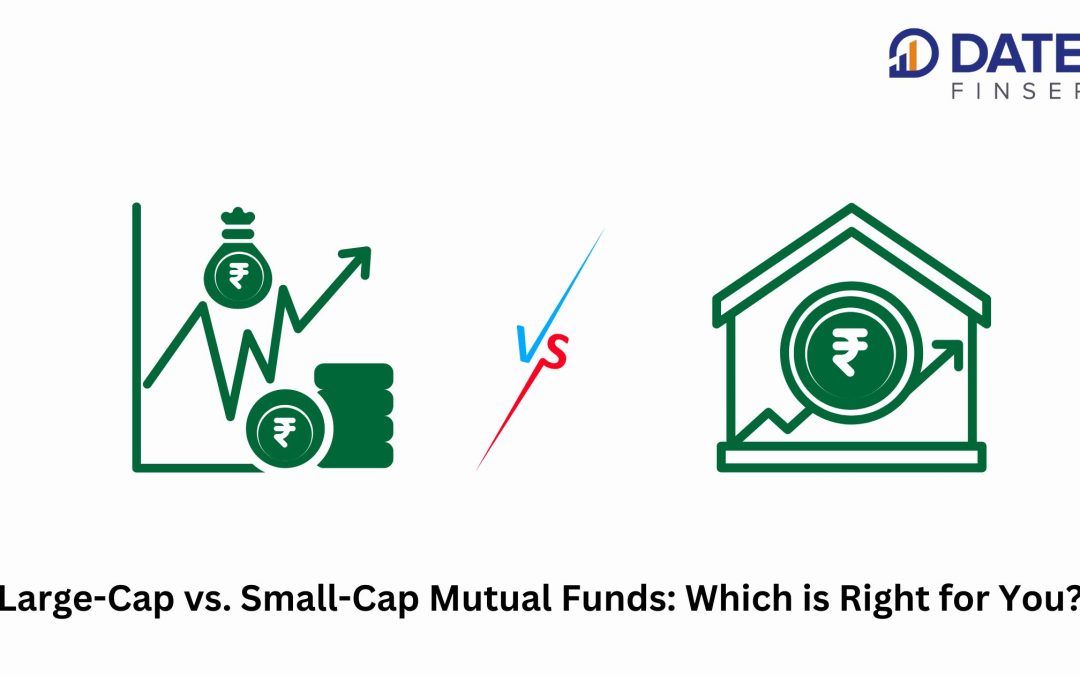When it comes to investing in mutual funds, the range of choices can often feel overwhelming. One of the fundamental decisions investors face is choosing between small-cap and large-cap mutual funds. Understanding the differences, risks, and rewards associated with each can help you tailor your portfolio to your financial goals. This guide will dive deep into the small vs. large-cap debate to help you make an informed decision.
What Are Small-Cap and Large-Cap Mutual Funds?
Small-Cap Mutual Funds: Small-cap mutual funds typically invest in companies with smaller market capitalization, usually below INR 5,000 crores. These companies are often young, growing businesses that have the potential for rapid growth but also carry more risk. Small-cap stocks are less stable than their larger counterparts, as these companies can be more susceptible to market volatility, economic downturns, and operational challenges.
Large-Cap Mutual Funds: In contrast, large-cap mutual funds invest in companies with large market capitalizations, generally exceeding INR 20,000 crores. These are well-established firms, such as blue-chip companies with a solid reputation, stable earnings, and a significant market presence. Large-cap funds offer more stability and are often preferred by investors looking for consistent returns with lower risk.
Key Differences Between Small-Cap and Large-Cap Mutual Funds
1. Risk and Volatility
- Small-Cap Funds: Small-cap stocks are generally more volatile than large-cap stocks. The smaller companies they invest in may experience sharper price swings due to market sentiment, economic conditions, or business performance. While this volatility offers higher potential returns, it also presents higher risks. It is common for small-cap funds to outperform during bull markets but underperform during bear markets.
- Large-Cap Funds: Large-cap stocks are less prone to large swings in price. These companies usually have more diversified revenue streams, greater financial resources, and established market positions. This makes them more resilient during economic downturns. Therefore, large-cap mutual funds tend to offer more stable, though often lower, returns compared to small-cap funds.
2. Growth Potential
- Small-Cap Funds: The appeal of small-cap mutual funds lies in their growth potential. Small-cap companies are often in the early stages of expansion, and their stocks can appreciate significantly if they succeed. For aggressive investors looking to maximize returns over a long-term horizon, small-cap funds can be an attractive option.
- Large-Cap Funds: While large-cap funds offer lower growth potential, they provide more consistent returns over time. These companies tend to have slower but steady growth. Large-cap funds are typically more suitable for conservative investors who prioritize capital preservation and stable income generation over explosive growth.
3. Investment Horizon
- Small-Cap Funds: Given their volatility, small-cap funds are ideal for investors with a long-term investment horizon—typically 7-10 years or more. This allows enough time for the companies to grow and for the market to smooth out periods of underperformance. Short-term investors may find themselves vulnerable to losses during market downturns.
- Large-Cap Funds: Large-cap funds are generally suitable for medium to long-term investors but can also be appropriate for shorter-term goals due to their stability. Investors looking for moderate growth with reduced risk may find large-cap funds a better fit, particularly for investment periods of 3-5 years.
4. Liquidity
- Small-Cap Funds: Liquidity can be an issue with small-cap stocks. Due to their smaller size, these companies might not be as actively traded in the market, making it harder to sell large quantities of stock without affecting the price. This lack of liquidity adds to the risk of small-cap funds.
- Large-Cap Funds: Large-cap stocks are usually more liquid, meaning they can be bought or sold easily without causing significant price changes. This makes large-cap funds more attractive for investors who may need quicker access to their funds.
Advantages and Disadvantages of Small-Cap Mutual Funds
Advantages:
- High growth potential
- Potential for significant capital appreciation
- Opportunity to invest in companies at early growth stages
Disadvantages:
- High volatility and risk
- Less liquidity
- Longer recovery time during market downturns
Advantages and Disadvantages of Large-Cap Mutual Funds
Advantages:
- Stability and lower risk
- Steady, predictable returns
- More liquid and easier to trade
Disadvantages:
- Lower growth potential compared to small-cap funds
- Can underperform during bull markets
- Less room for dramatic capital appreciation
Also read it –FD vs Life Insurance
Who Should Invest in Small-Cap vs. Large-Cap Mutual Funds?
Small-Cap Mutual Funds: These funds are best suited for investors with a higher risk tolerance and a longer investment horizon. If you’re willing to accept short-term volatility for the potential of significant long-term returns, small-cap funds might be a good choice. Younger investors or those with aggressive investment strategies often gravitate toward small-cap funds as part of their portfolio.
Large-Cap Mutual Funds: Large-cap funds are more appropriate for conservative investors who prioritize capital preservation and steady income. Retirees, those nearing retirement, or individuals who prefer lower risk often choose large-cap funds. These funds are also ideal for investors who need liquidity and prefer to avoid the market’s ups and downs.
Conclusion
Ultimately, both small-cap and large-cap mutual funds have their place in a well-balanced investment portfolio. Your choice between the two depends largely on your risk tolerance, investment horizon, and financial goals. Many investors opt for a blend of both, incorporating small-cap funds for growth potential and large-cap funds for stability. Diversification across asset classes and market capitalizations can help you build a portfolio that aligns with your investment objectives while minimizing risk.

